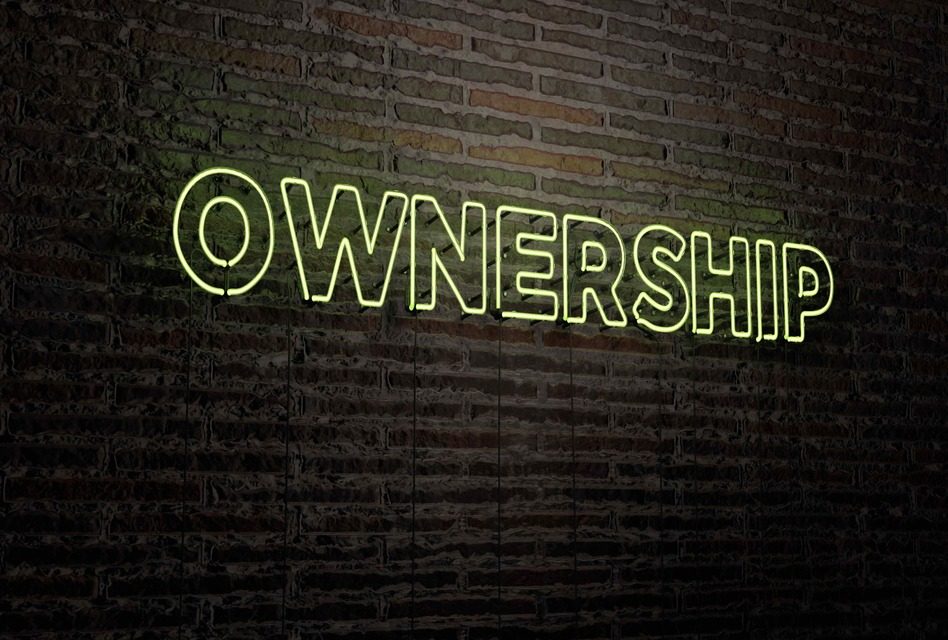We’ve talked to a lot of business owners — hundreds of them, to be specific.
When we ask business owners what they want from their people, the vast majority say they want their teams and employees to take more ownership of their work. In other words, they wish employees could clearly see the needs of the organization and act to meet those needs.
In essence, business owners want employees to think…like owners.
If that’s what you want as a leader, you have to create a culture that fosters that level of ownership. I want to introduce you to two key factors of creating a culture like that: empowerment and accountability.
Howard Schultz of Starbucks said it well: “People want guidance, not rhetoric. They need to know what the plan of action is and how it will be implemented. They want to be given responsibility to help solve the problem and the authority to act on it.”
Empowerment
Changing your people’s frame of mind starts with empowerment.
A big part of thinking like an owner is feeling empowered to do what needs to be done.
If you’re an owner or team leader reading this, your people can’t think and act like owners if they can’t make decisions and take action without being micromanaged.
We all know being micromanaged stinks — like Chipotle left in a trash can overnight. People will leave if they feel micromanaged for an extended period.
Most of us intuitively know what empowerment feels like, but let’s be clear on what it actually is. Employee empowerment is the process of providing production and managerial guidelines and then allowing employees to make the day-to-day decisions that affect their job duties.
In other words, as a leader, you provide the final result you want (production goals) and the guidelines (how it needs to happen), and then get out of the way. Your people have brains and hearts — let them use them. They can do incredible things for your organization.
To help us better understand empowerment, let’s look at an example of what it looks like in action.
Zappos wants its call-center workers to be empowered to serve customers. Instead of throwing the employees into cubicles, handing them a phone, and wishing them luck, all employees undergo four weeks of comprehensive training. This quirky method of running the call center is all about helping workers form a deep personal connection to the company so they think of themselves as stakeholders (aka owners), not robots. As a result, employees are clear on the values, principles and goals of their position when they actually start answering the phones.
Thanks to the training, Zappos call-center workers don’t read from scripts when they deal with customers. Operators are asked to access their “heart brains,” as opposed to their “head brains” when responding to customers.
Some amazing stories have resulted that prove this point. One customer service rep traveled to a rival store to purchase a customer a pair of shoes that were out of stock on the Zappos website. Another operator overnighted a free pair of shoes to a groom who had forgotten his pair back home.
These examples show what empowered employees are capable of, not only in helping customers, but in reinforcing and supporting worker engagement.
Accountability
The second key to helping your people think like owners is creating a culture of healthy accountability.
We need to hold others accountable at work because their work matters. We also need to allow others to hold us accountable because our work matters.
Business owners love people who embrace accountability because it means these team members are serious about getting things done.
It also means business owners can check their egos at the door and put the larger goals of the team and organization above their personal comfort. Letting others ask you how your progress is going (especially if it’s not going well) is tough on your ego, but it radically increases your likelihood of getting something done.
The American Society of Training and Development (ASTD) did a study on accountability and found that you have a 65% chance of completing a goal if you commit to someone. And if you have an accountability appointment with the person you’ve committed to, your chance of success increases by up to 95%.
Those are some crazy statistics. Put another way, if someone lets another person ask them about their progress, their goal gets accomplished 95% of the time.
This is why it’s so important to create a culture that allows for healthy accountability.
Personality and Performance
We readily admit accountability is hard. It’s hard because everyone at the office has feelings. Even that guy that acts like he doesn’t have feelings probably cried when Mufassa died in the Lion King — just like the rest of us.
To do accountability well, you must learn to separate personality from performance.
You want people to feel like you are for them as a person even when you have to challenge their performance.
To get super practical, you start by setting clear goals and benchmarks. Next, you let people know they have what it takes to get the job done. You equip and empower them to reach the goal. Then, and only then, should you hold them accountable to the goal.
If you aren’t holding anyone accountable, as a leader, you should ask yourself what you could do to better clarify expectations, equip and empower them to get the job done.
Kickstarting Accountability
If you don’t have this type of culture on your team, there’s no time like the present to start. When you begin developing an “ownership mentality,” you’re thinking and acting like an owner.
How can you kickstart accountability on your team?
- Model Accountability for Your Team.
- Expect Accountability from Your Team.
- Structure Accountability with Your Team.
1. Model It
If you want a culture of accountability on your team, you need to first model accountability yourself. If you aren’t the team leader, you don’t get off the hook here. Anyone on the team can model accountability.
You do that by taking responsibility for your actions and results, demonstrating a healthy work ethic, and avoiding a “victim” mentality where you blame others for an inability to meet your goals.
A few great questions to ask are:
- What can I do to demonstrate the right work ethic for the team?
- What can I do to eliminate “victim” thinking and take personal responsibility for what I can control?
- Is there anything I haven’t taken responsibility for that I should?
2. Expect Accountability
Modeling accountability is a great first step. Once you do that, you can then expect accountability from the team.
This practically plays out in two ways:
- You ask others on the team to hold you accountable. Give them permission to ask you about your results.
- If you are a team leader, you set clear standards and goals for the team and tell everyone upfront why these goals are important. Get input from your team when you set those goals. Once you do that, it actually gets weird if you don’t talk about them. It’s hard to create a lot of clarity and then ignore those expectations.
A few great questions to ask are:
- Have I given my team permission to hold me accountable to specific measurables?
- Are the expectations clearly set for our team?
3. Structure Accountability
This is a critical step to creating a culture of accountability. At Wildsparq, we do that on a weekly basis. We have a team meeting each week to look at our current scorecard (critical measures for our team), and based on the trends, we talk through the key obstacles keeping us from our goals.
It’s a part of what we call the Best Meeting Ever (BME for short). It’s a 90-minute meeting once a week that creates a clear structure for accountability.
If you want your people to think like owners, empower them to do their job and then create an environment of healthy accountability. It starts at the top. It starts with you.







